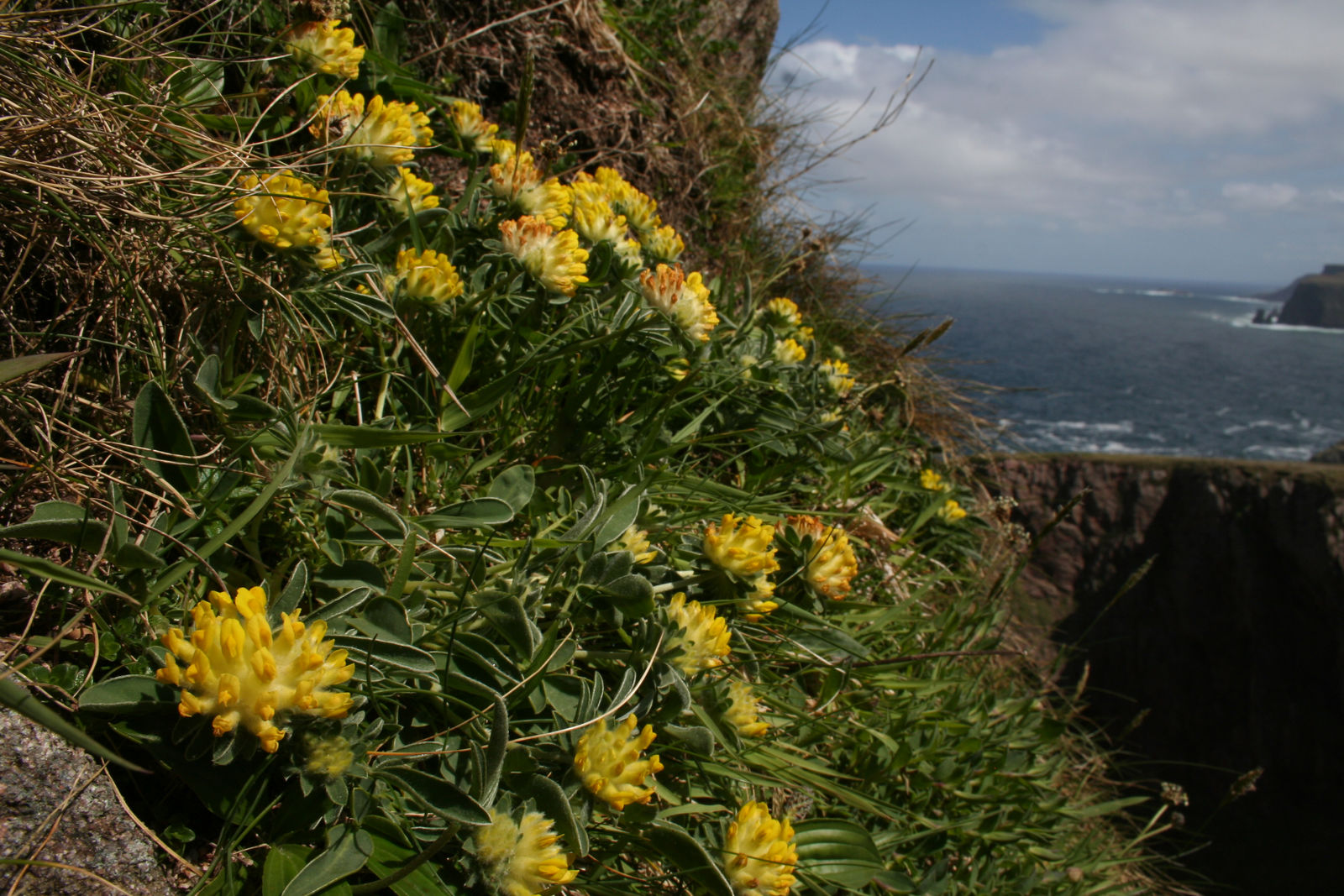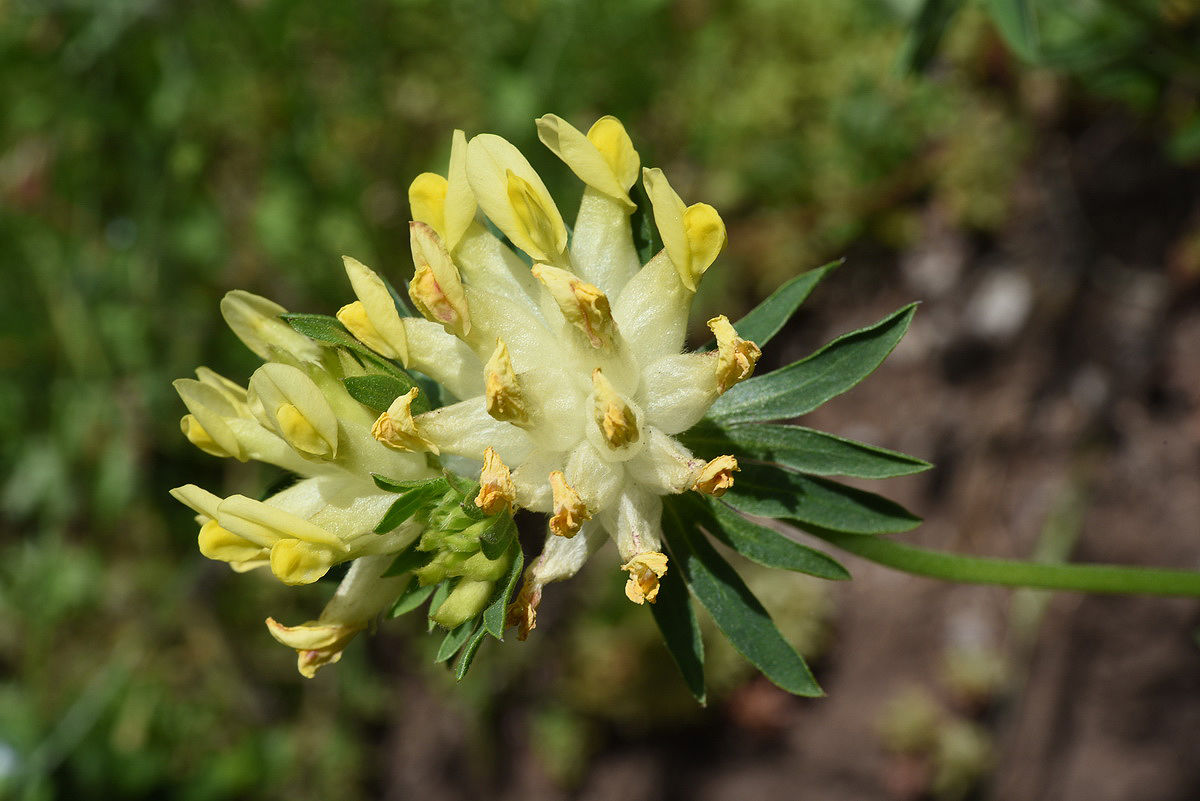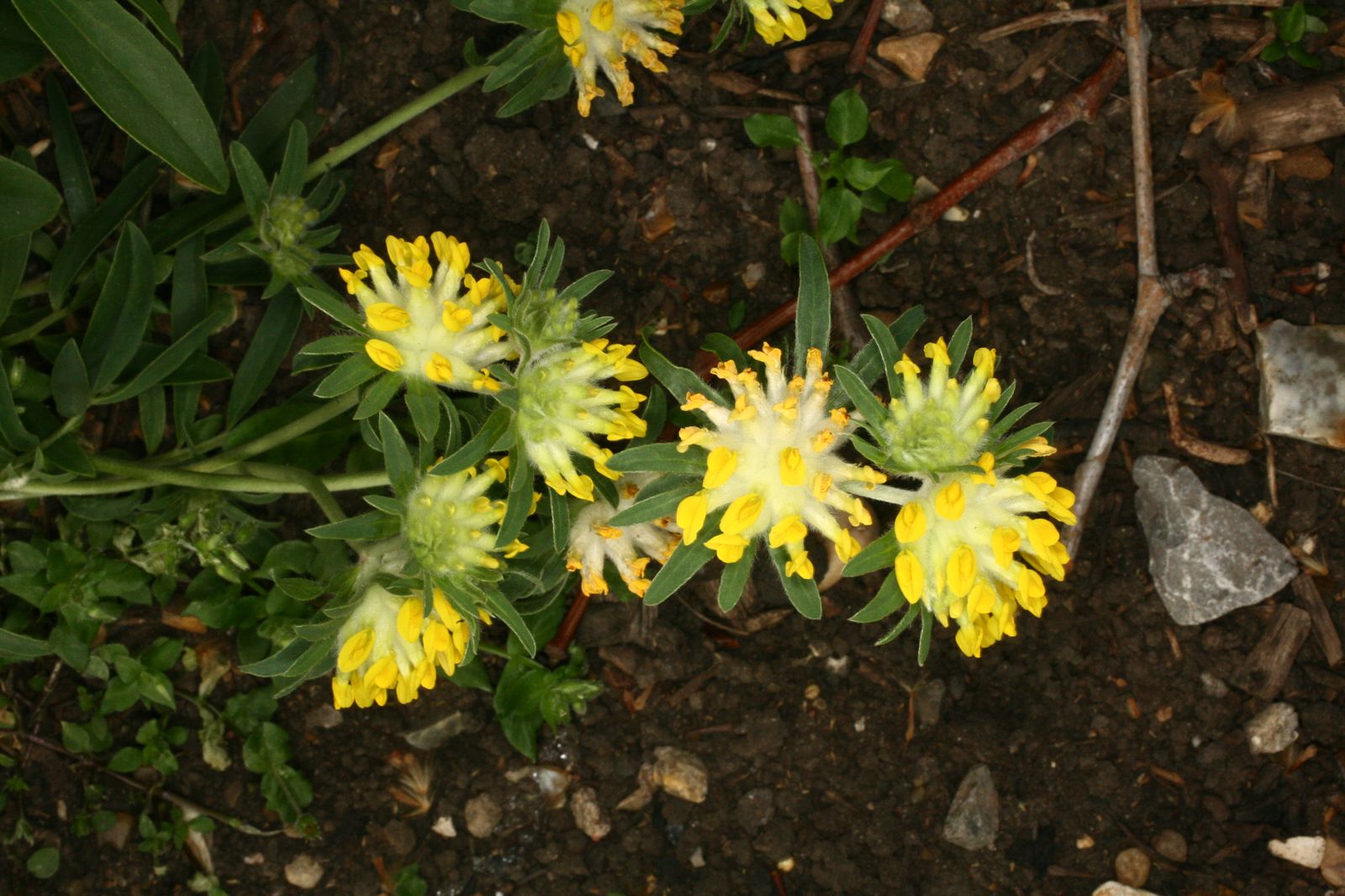Kidney Vetch
anthyllis vulneraria
Also known as: ["Common Kidney Vetch","Woundwort"]
Overview
A low-growing perennial herb native to Europe and parts of Asia, known for its yellow or pinkish flowers and fern-like leaves.
Benefits & Perks
["wildlife attractant (bees, butterflies, birds)","drought tolerant","low maintenance"]
Botanical Classification
| Phylum: | Magnoliophyta |
| Class: | Magnoliopsida |
| Order: | Fabales |
| Family: | Fabaceae |
| Genus: | Anthyllis |
| Botanical Name: | Anthyllis vulneraria |
Plant Characteristics
Basic Information
- Category: Flowers
- Suitable Location: rock gardens, sunny borders, or containers in temperate climates
- Suitable For:
- Is Weed: No
- Allergenicity: low
Environmental Needs
- Climate: {"temperatureRange":"5–30°C"}
- Hardiness: {"zones":"5–8"}
- Misting: rarely required, only if ambient humidity is very low
- Drainage: Fast-draining to prevent waterlogging.
- Soil Type: Well-draining, slightly alkaline soil with added organic matter. A mix of loam, sand, and compost works well.
Maintenance Level
- Maintenance Level: low
- Toughness Level: moderate
- Pruning Frequency: After flowering or every 2–3 months to maintain shape and vigor.
- Pruning Intensity: Moderate; remove up to one-third of the plant if overgrown, but avoid heavy pruning during extreme t
Care Details
Ideal Sunlight Coverage:
Full sun (6–8 hours of direct sunlight daily). Tolerates partial shade but may produce fewer flowers.
Sunlight Tolerance Tips:
Acclimate plants gradually to intense sunlight if moving from shade. Protect from harsh midday sun in hot climates to prevent scorching. Indoors, place near a south-facing window.
Care Requirements
Care Difficulty
easymoderate
Sunlight
full sun to partial shade
Rotate plant weekly for even growth; use sheer curtains to filter intense summer sun; supplement with grow lights if indoors.
Watering
every 7–10 days during active growth, reduce in winter
Water deeply but infrequently; ensure good drainage; avoid wetting foliage to prevent fungal issues.
Soil
well-drained, sandy or loamy soil with moderate fertility
pH: 6.0–7.5 (slightly acidic to slightly alkaline).
Ensure pots have drainage holes; avoid heavy clay soils; top-dress with compost annually.
Temperature
Prefers cool to moderate temperatures (60–75°F or 15–24°C). Tolerates cooler conditions but avoids prolonged frost.
Avoid placing near heat sources or drafty windows; maintain consistent temperatures; adjust watering with temperature changes.
Fertilizing
every 4–6 weeks during spring and summer
Apply fertilizer after watering to prevent root burn; flush soil occasionally to prevent salt buildup; use organic alternatives like compost tea for gentle feeding.
Propagation
Methods
Stem cuttings or division of clumps. Stem cuttings are more common for home growers.
Step-by-Step Propagation Guide
- Take 4–6 inch cuttings.
- Remove lower leaves.
- Dip in rooting hormone.
- Plant in medium.
- Keep moist and warm.
- Transplant once rooted.
Best Time: Early spring or late summer when the plant is actively growing but not stressed by heat or cold.
Environment
Warm (65–75°F or 18–24°C), humid, and bright but indirect light. Protect from direct sun and drafts.
Medium
Well-draining mix of perlite and peat moss or cactus potting mix.
Hormone
Rooting hormone is recommended to improve success rates.
Timeline
Roots typically form in 3–6 weeks; new growth may appear after 2–3 months.
Tools Needed
Pruning shears, rooting hormone, small pots, well-draining medium, misting bottle.
Quick Tips
Use healthy, non-flowering stems; maintain consistent moisture; provide bottom heat if possible; avoid overwatering.
Pruning & Repotting
Pruning Guide
Method
Pinch back tips for bushiness; deadhead spent flowers; trim leggy stems to encourage compact growth.
Pruning Plan
Prune to maintain shape, encourage bushier growth, and remove spent flowers to promote reblooming.
Tools
Clean, sharp pruning shears or scissors.
Checklist
Sterilize tools; prune after flowering; remove dead or diseased parts; shape evenly.
Repotting Guide
Best Season
Early spring before new growth begins.
Pot Size
One size up (e.g., from 4-inch to 6-inch pot); ensure the new pot has drainage holes.
Method
Remove plant gently; trim any circling roots; place in a slightly larger pot with fresh, well-draining soil; water lightly after repotting.
Suggestions
Repot every 2–3 years or when roots fill the pot. Necessary to refresh soil and provide space for growth.
Checklist
Choose appropriate pot size; use fresh soil mix; trim roots if needed; water sparingly after repotting.
Advanced Care Tips
Watering Mastery
Watering Checklist
Check soil moisture before watering; water deeply at the base; ensure drainage; avoid overhead watering.
How to Apply Water Properly
Water directly at the root zone until the soil is evenly moist but not waterlogged. Ensure excess water drains freely from the pot or planting site. Water in the morning to allow foliage to dry during the day.
Watering Schedule Tips
Water moderately during active growth in spring and summer, reducing frequency in fall and winter to prevent root rot. Allow the top inch of soil to dry between waterings.
Soil Improvement
Add coarse sand or perlite to improve drainage; incorporate compost for fertility; use lime to raise pH if needed.
Temperature Stress Management
Signs of Temperature Issues
Chlorosis or wilting in excessive heat; stunted growth or leaf drop in cold stress.
Cold Stress
Low temperatures slow growth and may cause leaf damage or dieback, especially if combined with wet soil.
Solution: Provide frost protection in winter; ensure well-drained soil to prevent cold-induced root rot; move potted plants indoors if temperatures drop below 50°F (10°C).
Hot Stress
Excessive heat can lead to wilting, flower abortion, and leaf scorch, especially if water demand is unmet.
Solution: Increase watering frequency during heatwaves; provide light shade during peak afternoon sun; improve air circulation around the plant.
Fertilizing Guide
Fertilizing Checklist
Use diluted fertilizer; apply during active growth; avoid winter feeding; flush soil periodically.
Fertilizing Method
Use a balanced, water-soluble fertilizer diluted to half strength every 4–6 weeks during spring and summer. Avoid fertilizing in fall and winter.
Common Problems & Solutions
Toxicity Warning
Cats
Slightly ToxicAnthyllis vulneraria is slightly toxic to cats if ingested in substantial quantities. The tannins present in the plant may lead to mild gastrointestinal irritation. No severe toxic reactions have been documented in cats.
⚠️ Symptoms:
🌿 Toxic Parts:
⚡ Toxic If:
if ingested
Dogs
Slightly ToxicAnthyllis vulneraria can be slightly toxic to dogs if ingested in significant amounts. The plant contains tannins, which may cause mild gastrointestinal upset. There are no known severe toxic effects associated with this plant in dogs.
⚠️ Symptoms:
🌿 Toxic Parts:
⚡ Toxic If:
if ingested
Humans
Non-toxicAnthyllis vulneraria is generally considered non-toxic to humans. However, ingestion in large quantities may cause mild gastrointestinal discomfort due to its high tannin content. The plant has historically been used in traditional medicine for its astringent properties.
⚠️ Symptoms:
🌿 Toxic Parts:
⚡ Toxic If:
if eaten in large quantities
Frequently Asked Questions
Q: Is Anthyllis vulneraria toxic to pets?
A: No, it is non-toxic to dogs and cats.
Q: Does this plant attract wildlife?
A: Yes, it attracts bees, butterflies, and birds.
Q: How much maintenance does it require?
A: It requires low maintenance and is drought tolerant.
Quick Reference
| Family: | Fabaceae |
| Care: | easy |
| Light: | full sun to partial shade |
| Water: | every 7–10 days during activ |
Get Expert Care Tips
Download the Plantious app for personalized care reminders and plant identification!
Google Play App Store








